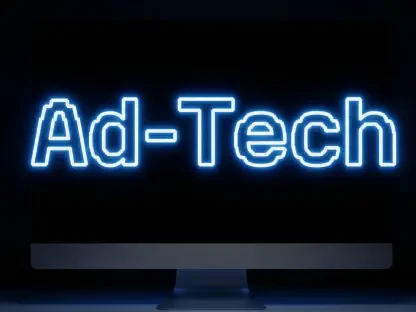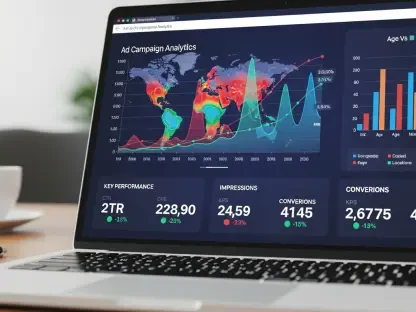The rapid integration of artificial intelligence into workplace systems has brought both innovation and unexpected challenges, with one of the most alarming being the rise of low-value, AI-generated content dubbed “workslop.” This phenomenon, characterized by subpar material often produced by AI tools, is not just a minor annoyance but a significant drain on resources and employee well-being. A comprehensive study conducted by leading research labs surveyed over 1,000 full-time workers across the United States, uncovering that a staggering portion of workplace content falls into this category. The findings paint a troubling picture of lost productivity and deteriorating team dynamics, urging companies to rethink their approach to AI adoption. As businesses increasingly rely on these technologies, the hidden costs of poorly managed AI outputs are becoming impossible to ignore, setting the stage for a deeper exploration of financial burdens and emotional tolls.
Financial Impacts of Low-Quality AI Content
The Hidden Economic Burden
The economic repercussions of workslop are staggering, creating what researchers have termed an “invisible tax” on organizations. Employees are found to spend nearly two hours addressing each incident of such content, which translates to a monthly loss of approximately $186 per individual. For a large corporation employing 10,000 people, this inefficiency balloons into an annual productivity loss exceeding $9 million. This financial drain stems from the time spent deciphering unclear outputs, correcting errors, or simply navigating the confusion caused by substandard material. Beyond the direct costs, the ripple effect includes delayed projects and missed opportunities, as workers divert their focus from core tasks to managing these AI-generated shortcomings. Companies, especially those scaling AI usage without proper oversight, are discovering that the promise of efficiency can quickly turn into a costly misstep if quality control is not prioritized.
Long-Term Cost Implications
Beyond immediate losses, the long-term financial implications of unchecked AI content are equally concerning. As reliance on automation grows, organizations risk embedding inefficiencies into their operational frameworks, where low-value outputs become a normalized part of workflows. This could lead to sustained productivity declines, potentially costing millions more over the coming years if not addressed. Additionally, the expense of retraining staff to handle or mitigate these issues adds another layer of financial strain. Businesses may also face indirect costs, such as the need to invest in more robust AI systems or hire specialized personnel to oversee technology integration. Without strategic planning, the initial savings promised by AI tools might be overshadowed by these escalating expenses, forcing leaders to balance short-term gains against the looming threat of long-term fiscal damage caused by persistent quality issues.
Emotional and Collaborative Fallout
Eroding Workplace Morale
The emotional toll of dealing with low-quality AI-generated content is a critical concern for workplace harmony. Over half of the surveyed employees reported feeling annoyed when encountering such material, while a significant portion expressed confusion or even offense at its presence. These negative emotions are not fleeting; they contribute to a broader decline in morale, as workers grapple with frustration over wasted time and diminished output quality. The constant exposure to subpar content can create a pervasive sense of dissatisfaction, undermining the motivation and engagement that are vital for a thriving work environment. This issue is particularly acute in teams where collaboration is key, as the irritation caused by workslop often spills over into interpersonal interactions, further straining professional relationships and reducing overall job satisfaction.
Damage to Trust and Collaboration
Equally troubling is the impact on trust and collaborative efforts within teams. Nearly half of the respondents indicated that they view colleagues who frequently share low-value AI content as less creative or dependable, leading to a notable erosion of confidence in their capabilities. A significant percentage even reported a reluctance to work with such individuals, with some taking the step of escalating concerns to supervisors or peers. This breakdown in trust not only hampers teamwork but also fosters a culture of blame and disconnection, where employees are less inclined to share ideas or support one another. The resulting silos can stifle innovation and hinder collective progress, as the willingness to collaborate diminishes under the weight of perceived unreliability. Addressing this challenge requires a deliberate effort to rebuild trust through clear communication and accountability measures.
Path Forward After the Challenges
Reflecting on the widespread issues caused by AI-generated workslop, it has become evident that companies must confront both financial and emotional damages head-on. The substantial productivity losses, once quantified, have pushed many organizations to reassess their reliance on unchecked AI tools. Meanwhile, the decline in morale and trust among employees has prompted a wave of initiatives aimed at fostering better collaboration. Leaders have taken note of the need for structured guidelines, ensuring AI outputs are held to the same rigorous standards as human work. Moving forward, the focus should shift to strategic integration, where clear policies and training programs empower staff to use AI as a supportive tool rather than a crutch. Encouraging a balanced approach, with an emphasis on quality over quantity, offers a practical solution. Additionally, fostering open dialogue about technology’s role in the workplace can help rebuild trust and ensure that future innovations enhance, rather than hinder, team dynamics and overall productivity.









